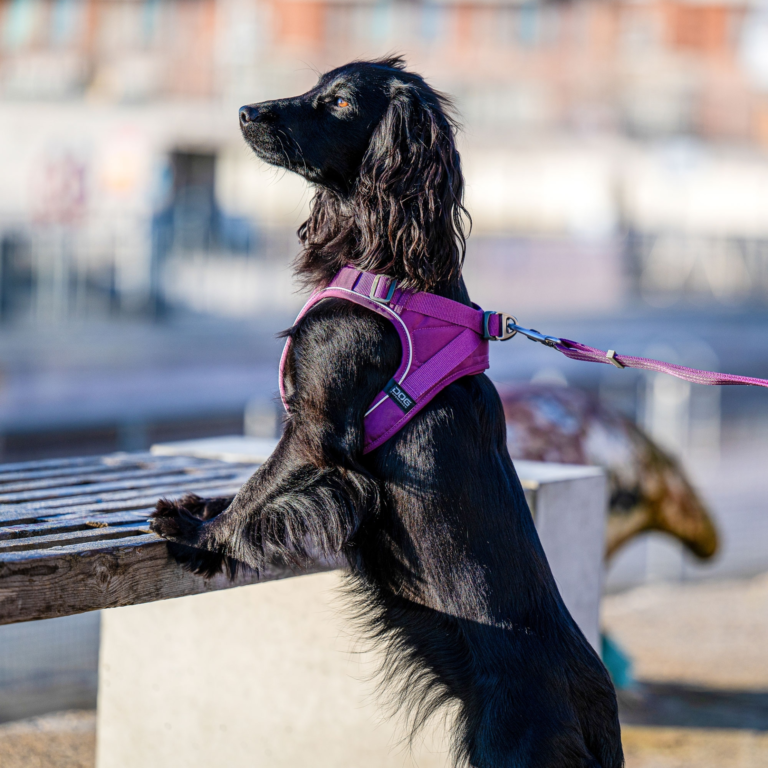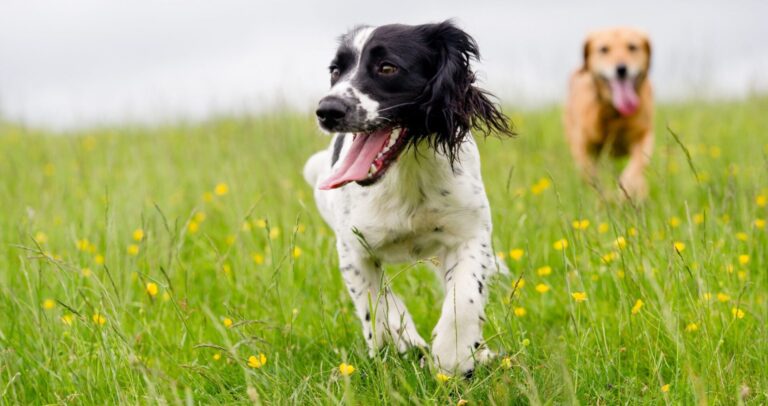Do you have a reactive dog, lunging at other dogs, people or cars? Whether it is out of fun or fear, it can be a challenging behaviour.
Feeling powerless and embarrassed when you can’t control your dog’s behaviour can be incredibly frustrating. It can even make you dread encountering other dogs. In these moments, it’s easy to feel helpless and unsure of what to do. Calling your dog’s name and offering treats may not always work.
That’s where the “let’s go” cue comes in. You can give it any name you like, but the purpose is to teach your dog to make a U-turn and focus back on you. This simple skill can be a game-changer when it comes to getting your dog out of any situation. Depending on your dog’s behaviour around other dogs, the “let’s go” cue can serve various purposes.
For super social dogs who get overly excited and fixate on other dogs, the cue can help redirect their attention and allow for a calmer approach and greeting. It can prevent your dog from rushing towards another dog or engaging in stalking behaviours that may be perceived as threatening. It can also help your dog move on after a greeting or break up a game between dogs. For fearful or reactive dogs, the cue can provide a way for them to move away and create space from another dog. If a dog is approaching too quickly, the cue can help create distance and avoid a potentially confrontational situation. It can also be useful in situations like walking towards another dog on the pavement or avoiding head-to-head approaches. For dogs with a low tolerance for social interaction, the “let’s go” cue can help break off greetings before your dog becomes tense or overwhelmed. If a dog that may trigger your dog’s anxiety or discomfort is approaching, the cue can turn your dog away and prevent an interaction from occurring. In summary, the “let’s go” cue is a valuable tool that can make a significant difference in managing your dog’s behaviour around other dogs.
Why is it so effective for a reactive dog?
We often find ourselves using our dogs’ names excessively without always rewarding or acknowledging their response. As a result, their names lose their value and significance over time due to overuse. It can be challenging to avoid this habit, but teaching a cue like “let’s go” can provide a highly valuable alternative.
Additionally, it is common for us to struggle to get our dog’s attention, especially when they are excited, fearful, or fixated on other dogs. Regaining their attention or redirecting their focus can be difficult. By teaching a fun and high-value cue, you can effectively capture their attention and engage them in different behaviours.
“Let’s go” is a versatile cue that can be used in various situations. It should always maintain its high value, allowing your dog to respond even in challenging circumstances. For example, it can be used after your dog sniffs another dog, when they are on the verge of a reaction, or when you need to quickly avoid a potential trigger.
For dogs who resist being led away from a situation, causing them to freeze or react negatively, “let’s go” can be paired with a positive association of lead pressure. This means that when your dog feels the lead or longline slightly tighten and hears the cue “let’s go,” they will willingly turn towards you. This skill helps your dog develop a positive association with any tension, eliminating negative reactions or resistance.
Teaching “Let’s Go”:
1. Be ready with some medium to high-value treats and a clicker or marker word. Choose a low-distraction part of your house where it is just the two of you. You might want a space with a hard floor as you will be flicking a treat on the ground. Get your dog’s interest by flicking a treat on the floor and saying an excited “get it”. Repeat several times.
1. Then, with your dog still off the lead but focused on you, take a few steps with your dog following then simply turn away from them. Mark (click/word) when your dog turns to follow you. Reward them by tossing a treat ahead of you.
2. Repeat this process until your dog consistently follows your turn before trying the exact same game but with your dog on their lead.
3. Introduce the cue “let’s go.” Say “Let’s go,” turn away, mark (click/word) and toss a treat.
4. Gradually increase movement. Say “Let’s go,” turn away, and continue walking. Reward your dog, from your hand this time, with multiple treats and praise for following along.
5. Gradually increase the distance you move each time.
6. Once your dog understands this concept, you can introduce some distractions. Start by practising in different quiet locations, such as various rooms in your home, the garden, or a peaceful walking spot.
7. Next, add a food or toy as a distraction. Place the food on the ground, let your dog see it, and as they start moving towards it, say “Let’s go” and turn away. When your dog moves with you, mark and toss them the reward. If the lead becomes tight, be patient and wait for your dog to turn around. Avoid tugging or pulling them, just give them time and they will eventually turn.
8. Once your dog is responding well to this setup, start incorporating the cue during walks. Begin by practising away from other dogs in the distance. Once your dog reliably responds, gradually decrease the distance between dogs until you feel confident that they are ready to respond during an actual greeting.
Ensure that you only use the phrase ‘let’s go’ when you’re ready to throw the treat and turn it into a fun game. If you want your dog to change direction with less speed and focus, use a different word or phrase like ‘this way’ so that the ‘let’s go’ cue remains valuable and meaningful. Additionally, keep in mind that ‘let’s go’ can be very exciting for dogs because it’s associated with chasing a treat. However, if your dog finds it too stimulating, you can modify the exercise by incorporating a ‘find it’s activity where they calmly sniff for treats on the floor. This way, you can still reward your dog with the treat chase but prevent their excitement from escalating. If you would like some help training this skill you can book one to one training with me here.
Conclusion
Let’s Go is a simple to teach, highly useful skill that is completely achievable by every dog. By keeping this skill ready and practised you will always have an effortless way to get away from any situation.

